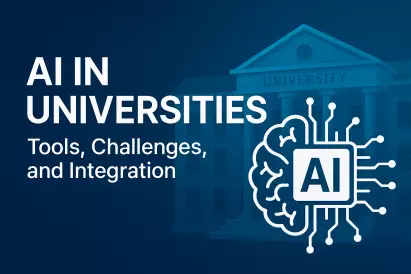Summary: In this article, we explore the current and future landscape of Master’s programs in Industrial and Operations Management in Western Europe. Topics include enrollment trends, evolving skills needs, curriculum shifts, employability factors, and market challenges—all within the region’s broader push toward sustainability and digital transformation.
Industrial and Operations Management Market in Western Europe (2025)
The Master’s in Industrial and Operations Management (IOM) continues to thrive in Western Europe, a region rich in academic tradition and industrial innovation.
While specific data on IOM enrollments is scarce, growth in STEM and business-related Master’s programs averages between 4–7% annually, exceeding general higher education trends.
International students form a substantial chunk of the demographic, with English-taught degrees in countries like the Netherlands and Sweden offering strong pull factors such as supportive visa pathways and cross-border credit compatibility via the Bologna Process initiative.
The aging labor force and declining birth rates across Europe have prompted universities to expand their lifelong learning efforts, catering to mid-career professionals alongside traditional graduate cohorts.
Institutions are also enhancing their offerings in parallel disciplines such as Quality Management to align with shifting industrial standards.
Macro drivers such as digitalization, geopolitics, ESG regulation, and digital upskilling are further propelling these programs into new strategic relevance, overlapping with areas like Sustainable Development.
Curriculum Trends and Skill Niches
As of 2025, the curriculum is rapidly aligning with industrial realities. Universities are incorporating modules in smart manufacturing, predictive analytics, digital twins, and cognitive automation—core pillars of Industry 4.0. Sustainable operations training in life-cycle assessment, carbon accounting, and ethical sourcing has evolved from elective to essential.
Programs are universally interdisciplinary—marrying data science, operations, and sustainability efforts—and leverage industry-linked case studies, capstone projects, and micro-credentials in emerging tech like blockchain.
This holistic development is particularly relevant to future professions in Industrial and Operations Management.
Flexible delivery formats—hybrid, modular, and online options—are enabling professionals to build their expertise in tandem with employment or entrepreneurship, much like options available in part-time MBA programs.
Top Skills and Graduate Employability
Employers in manufacturing, logistics, and aerospace are placing a premium on both hard and soft skills. Technical skills include AI, machine learning for logistics and procurement, robotics, and ERP systems.
Transversal skills such as project management, ethical leadership, and sustainability literacy are also in demand.
Graduates often secure roles such as operations managers, production planners, and supply chain analysts.
Annual salaries range from €45,000 to €75,000, with higher compensations for those skilled in AI or with international mobility.
Most leading Master’s programs embed real-world experience through internships and apprenticeships. In Germany and Switzerland, dual academic-vocational models are particularly robust.
For those interested in governance-focused roles, programs in Public Administration also share overlapping themes of operational efficiency and regulatory compliance.
Accreditation, Quality, and Recognition
Accreditation remains a critical marker of quality. Programs aspire to both national quality assurance and international recognitions like AACSB or EFMD. Many target dual accreditations in business and engineering domains to broaden appeal and scope.
Cross-border credit transfer, facilitated via the Bologna Process, enhances academic transparency and mobility.
Visa policies—like Germany’s 18-month post-study job seeker visa—also significantly affect competitiveness, much like frameworks seen in International Management education.
Access to Education, Cost, and ROI
Cost structures vary significantly by country. Public institutions in Germany, France, and Scandinavia offer low or no tuition for EU/EEA applicants, while non-EU students may pay between €5,000 to €20,000 annually.
The UK and the Netherlands often have higher fee brackets.
Scholarships—especially targeting women and underrepresented groups—are rising, supported by both government and industry efforts.
In engineering-dominated regions like Bavaria, employer sponsorships for advanced studies are common, echoing initiatives seen in Launching Awards programs.
The ROI for such degrees is typically realized in three to five years, particularly for linguistically and technically versatile graduates open to working in high-demand regions or niches.
Internationalization and Global Competition
Western European universities face dual pressures: attracting international students while helping domestic candidates remain competitive.
To address this, institutions are enhancing career services, international dual degrees, and virtual exchange programs.
Partnerships with EdTech vendors allow the deployment of modular, stackable learning—features increasingly embedded in offerings across interconnected domains like Digital Marketing.
Collaborative ecosystems are being fostered through Erasmus initiatives, joint ventures in digital labs, and shared credentialing platforms.
Challenges and Future Risks
Despite promising developments, several risks loom. These include rising tuition and living costs for non-EU students, global talent wars with North America and Asia, outdated faculty pipelines, and the immense capital necessary for continuous tech upgrading.
Some programs struggle to update their toolkits in time, lagging in adopting innovations like generative AI or simulation modeling. Plus, shortfalls in public research funding may curtail Europe’s capacity for deep tech breakthroughs.
Fields related to Risk Management and geopolitical studies are increasingly incorporated to help students navigate supply chain disruptions and global tension zones.
Outlook: 2025–2028
The baseline forecast points to steady enrollment and curriculum digitalization with stable international student ratios of 30–35%. ESG and AI integration will become mandatory standards across institutions.
Optimistic scenarios foresee increased investment in green technologies, streamlined visa policies, and deeper collaborations between academia and industry, energized by EU-wide initiatives like the Union of Skills framework.
Key educational innovations expected to scale include virtual reality labs, blockchain-based credentialing, and immersive simulations in operations management strategy.
These align with developments seen in the Innovation Awards sector.
For employers and policymakers, it's vital to support talent development with robust funding, smart regulation, and cross-sector investment in education. As knowledge economies pivot, the caliber of industrial leadership will determine regional resilience. The window of opportunity is open now.



